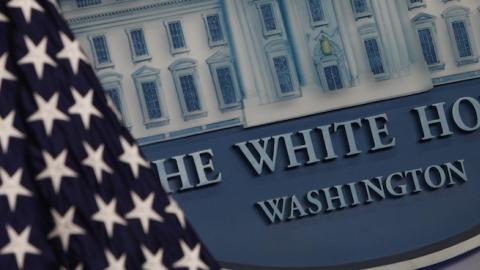The recent release of anemic quarterly economic-growth numbers for 2016 has revived the debate over the Obama economy. Some say it has been okay; some say it has been lousy. In truth, the economy under President Barack Obama has been historically bad. How bad? Adjusted for inflation, average yearly GDP growth under President Obama has been less than half of what it was under President Jimmy Carter, 1.5 percent to 3.3 percent.
According to figures from the U.S. Commerce Department's Bureau of Economic Analysis (BEA), the source for all of the figures provided herein, average annual GDP growth in the post-World War II era has been 2.9 percent. By far the worst year in that stretch was the first, when in the immediate aftermath of the war, GDP declined more than four times as much (-11.6 percent) as it has in any year since. From 1947-onward, average annual GDP growth has been 3.2 percent.
But average annual GDP growth has varied greatly by president, ranging from a high of 5.3 percent under President Lyndon Johnson to a low of 1.5 percent under President Obama, as the following chart conveys:

Here is the complete list of average annual GDP growth ranked by postwar president (in descending order):
* Johnson (1964-68), 5.3%
* Kennedy (1961-63), 4.3%
* Clinton (1993-2000), 3.9%
* Reagan (1981-88), 3.5%
* Carter (1977-80), 3.3%
* Eisenhower (1953-60), 3.0%
(Post-WWII average: 2.9%)
* Nixon (1969-74), 2.8%
* Ford (1975-76), 2.6%
* George H. W. Bush (1989-92), 2.3%
* George W. Bush (2001-08), 2.1%
* Truman (1946-52), 1.7%
* Obama (2009-15), 1.5%
Obama's last-place tally of 1.5 percent doesn't even include the BEA's numbers for 2016, since the year isn't yet complete. Thus far, growth in 2016 has been 0.8 percent in the first quarter and an estimated 1.2 percent in the second quarter. So Obama will be lucky to finish his presidency at even half the postwar average of 2.9 percent growth.
Some Obama supporters would no doubt reply that Obama inherited a bad economy from President George W. Bush, and this unfortunate inheritance is bringing down his average. Fair enough. Another way to examine economic success under various presidents is to look at whether the economy has ever really gotten humming on their watch. This can be gauged by looking at their best year of economic growth.
Indeed, while 1946 (and to some degree 1947) is dragging down President Harry Truman's overall number, his best year—1950, when real GDP growth was a whopping 8.7 percent—was better than any other postwar president's best year. President Ronald Reagan's best year—7.3 percent growth in 1984—was second only to Truman's. The average best year for a postwar president has been 5.6 percent GDP growth.
Obama's best year? 2.6 percent in 2015. That's so weak that it is beneath the post-WWII average of 2.9 percent. In other words, Obama's best year of economic growth would have been a below-average year across the past 70 years.
The following chart shows the best year of real GDP growth under each president since WWII:

Here is the complete list of the best year of real GDP growth under each postwar president (in descending order):
* Truman (1950), 8.7%
* Reagan (1984), 7.3%
* Eisenhower (1955), 7.1%
* Johnson (1966), 6.6%
* Kennedy (1962), 6.1%
* Nixon (1973), 5.6%
* Carter (1978), 5.6%
(Average best year for post-WWII presidents: 5.6%)
* Ford (1976), 5.4%
* Clinton (1999), 4.7%
* George W. Bush (2004), 3.8%
* George H. W. Bush (1989), 3.7%
(Average for all postwar years: 2.9%)
* Obama (2015), 2.6%
In terms of generating strong economic growth at some point during a given presidency, it is actually advantageous for there to have been poor growth at an earlier point in that presidency (or late in the prior presidency), as growth is usually stronger coming out of a recession than under normal circumstances. Indeed, prior to Obama, every postwar president who experienced a year of GDP decline on his watch (as Obama did in 2009) oversaw annual growth of 4 percent or more within three years or less. In twice as much time (six years), Obama has yet to oversee growth of even two-thirds that amount. (President George H. W. Bush didn't have three years left in office when the economy declined by 0.1 percent in 1991, but it grew by 3.6 percent in 1992 and by 4 percent two years after that under President Bill Clinton.)
Among postwar presidents, here is the complete list of how quickly and fully the economy has rebounded after experiencing negative GDP growth:
* Truman: -11.6% growth (surrounded by -1.0% growth—under FDR—and -1.1% growth), followed two years later by 4.2% growth (and two years after that by 8.7% growth); -0.5% growth followed one year later by 8.7% growth;
* Eisenhower: -0.6% growth followed one year later by 7.1% growth; -0.7% growth followed one year later by 6.9% growth;
* Ford: -0.5% growth (under Nixon, and -0.2% growth the subsequent year) followed two years later by 5.4% growth;
* Reagan: -0.2% growth (under Carter) followed three years later by 4.6% growth; -1.9% growth followed two years later by 7.3% growth;
* Clinton: -0.1% growth (under George H. W. Bush) followed three years later by 4.0% growth;
* Obama: -2.8% growth followed by less than 2.7% growth for six straight years
And yet Hillary Clinton, Obama's intended successor, promises more of the same. It's hard to believe that the historically bad Obama economy and the issues associated with it—Obamacare, trade, immigration—won't favor Donald Trump.















